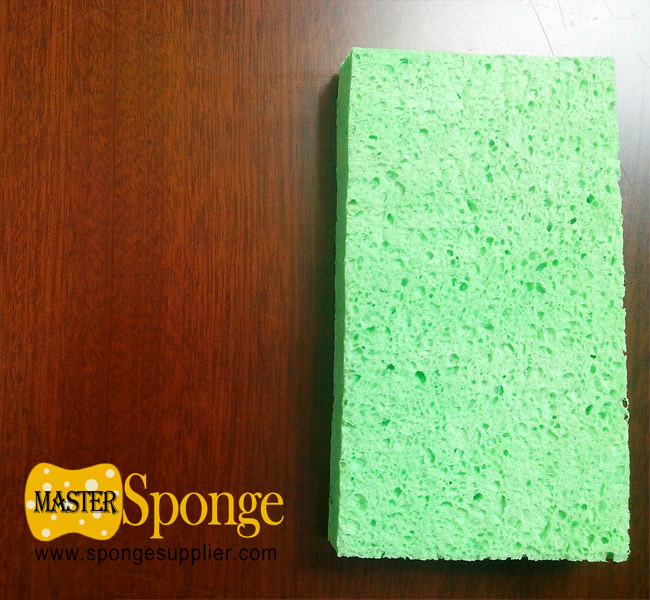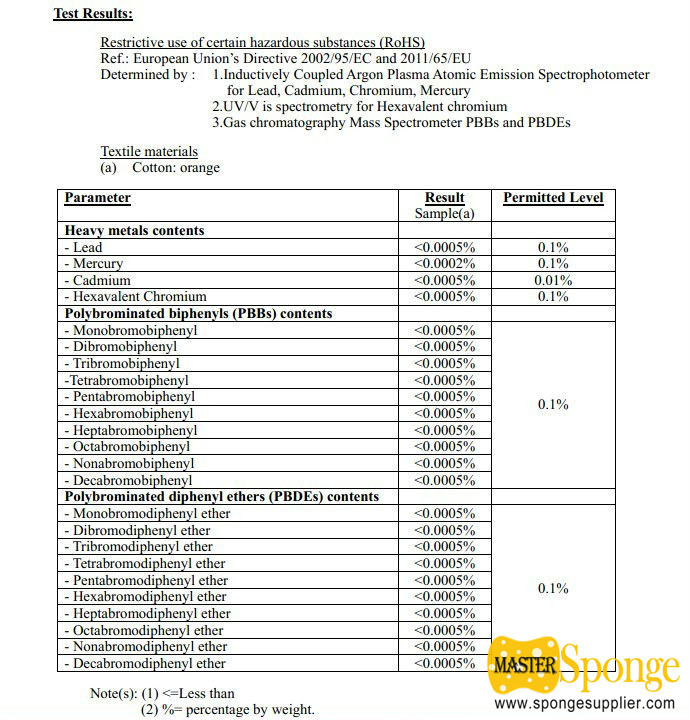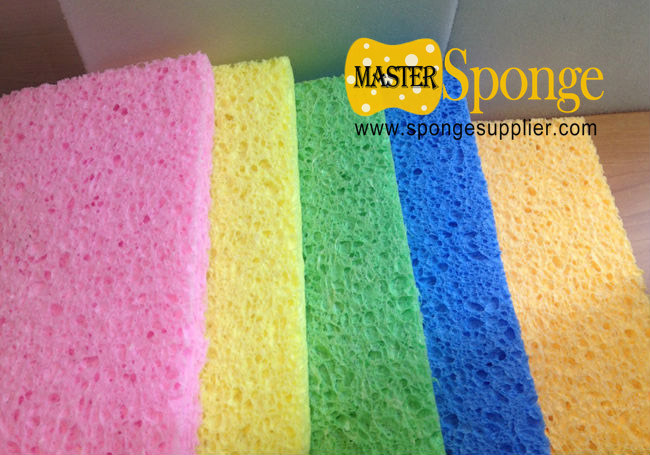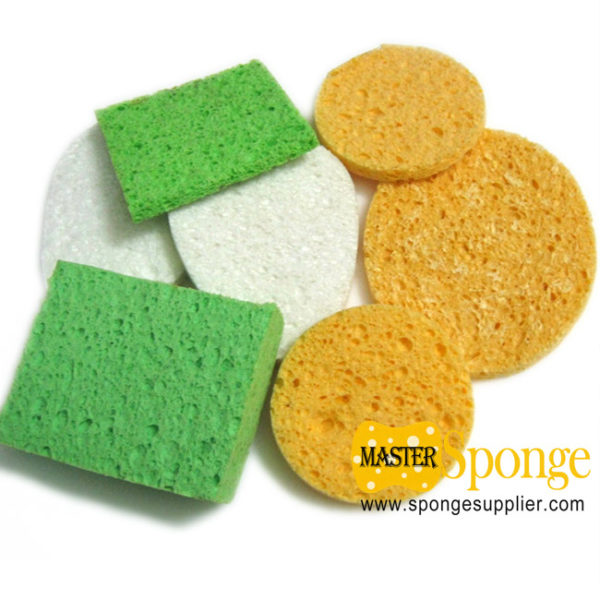This natural wood pulp cellulose sponge can be used for face, body or general home cleaning.
CELLULOSE SPONGE SPECIFICATION
| CELLULOSE SPONGE COMPOSITION | |
| COMPOSITION | PERCENT BY WEIGHT |
| Water | 40%~70% |
| Cellulose | 30%~60% |
| MgCl2(Magnesium Chloride) | 4%~7% |
| Quaternary Ammonium Compounds | < 0.5% |
| Pigment | < 1% |
Think of a cleaning sponge and you are likely to recall a picture of a manufactured cellulose sponge. These sponges are some of the most common cleaning sponges on the market. They often come in bright colors and are usually shaped as rectangles or ovals.
Cellulose sponges are very inexpensive. They absorb and hold liquid well and can last through some fairly tough cleaning jobs. Cellulose sponges work well on a number of surfaces. They can even be cut into smaller sizes to provide more uses out of each sponge.
Cellulose sponges are made from wood pulp, and the small holes inside them help to absorb liquid and hold it inside the sponge. These sponges are soft inside their sealed packaging because they are usually treated with a soap that keeps them pliable and keeps bacteria from growing inside the package.
Cellulose sponges have a tendency to trap residue and particles, so they can be difficult to fully rinse out. These same particles can lessen the life of the sponge. Cellulose sponges should never be used to wipe up raw egg or raw meat juices. For those jobs, a more disposable paper towel is a better option.
Cellulose sponges work well on dishes, countertops, bathroom surfaces, and everyday spills.
What’s the difference between our cellulose sponges and those other cleaning sponges,any other cellulose sponges?
Ordinary cleaning sponges are often but not always made from one of Mother Nature’s least favorite substances: oil-based, landfill-clogging plastic. Let’s say you toss one possibly germy plastic polyether or polyester sponge in the trash a week. It’s no doubt a safe hygienic move but this means that a year’s worth of sponges will be taking up landfill space for upwards of 52,000 years. Aye yiy yiy! Your house may be spotless, but the mess you’re making in landfills will never go away in your lifetime.
Also,even if you buy antibacterial sponges. Avoid ’em. Most have been treated with the antibacterial/antifungal agent triclosan, an environmentally harmful pesticide that’s been wreaking havoc on aquatic ecosystems for some time now.
This leaves us with cellulose sponges. Our pure cellulose sponges are made from 100% Canadian wood pulp. Despite cellulose sponges are a little expensive than ordinary cleaning sponges.But you should be able to find them with no real problem. Although man-made, they’re far more “green” than plastic ones since they biodegrade in landfills and go through a far less toxic manufacturing process.
Probably,many people used to think about that pure cellulose sponges are very expensive,or if being made with a lower price,the quality will be unfavorable.Fortunately,yep,now I bring you a good news,our cellulose sponges are developed and produced all by ourselves,with performances near the same as 3M’s,but price is just approximate 70% of 3M’s!
Advantage:
1. High flexibility,eco-friendly.
2. Very well absorbility and release capacity.
3. Close to toppest quality with a most favorable price.
4. All dimensions and shapes can be customized.
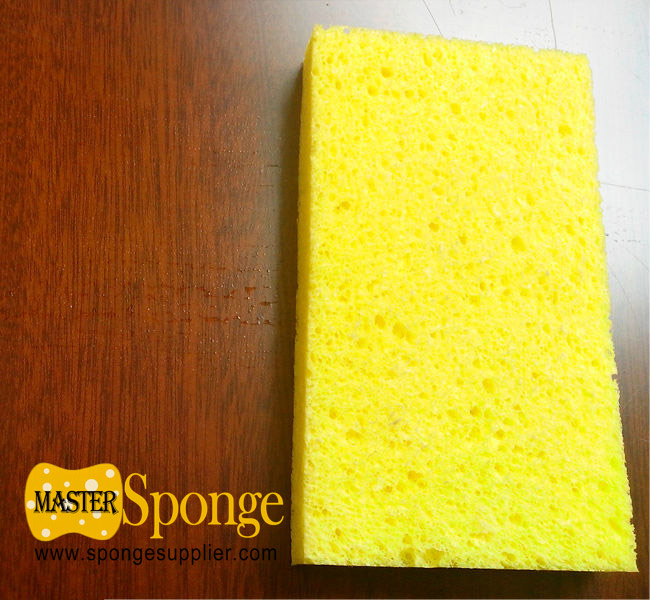
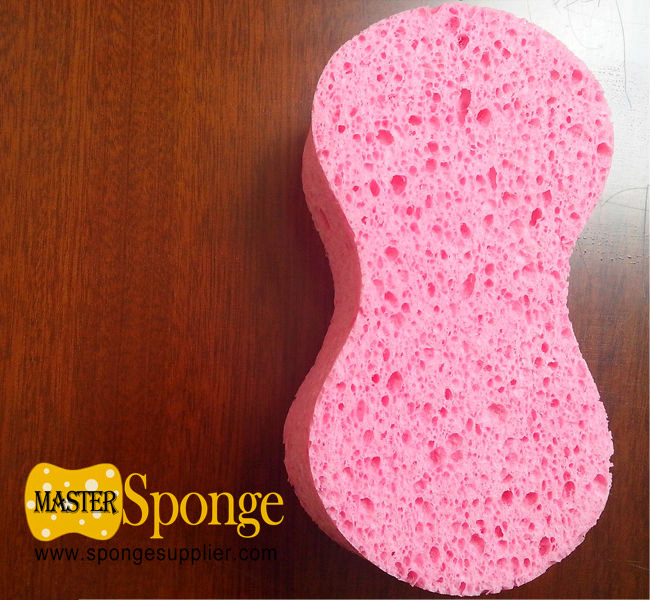
Almost no water marks after wiped. ( refer to left of the desk)
3.) cellulose sponge from Master Sponge:
